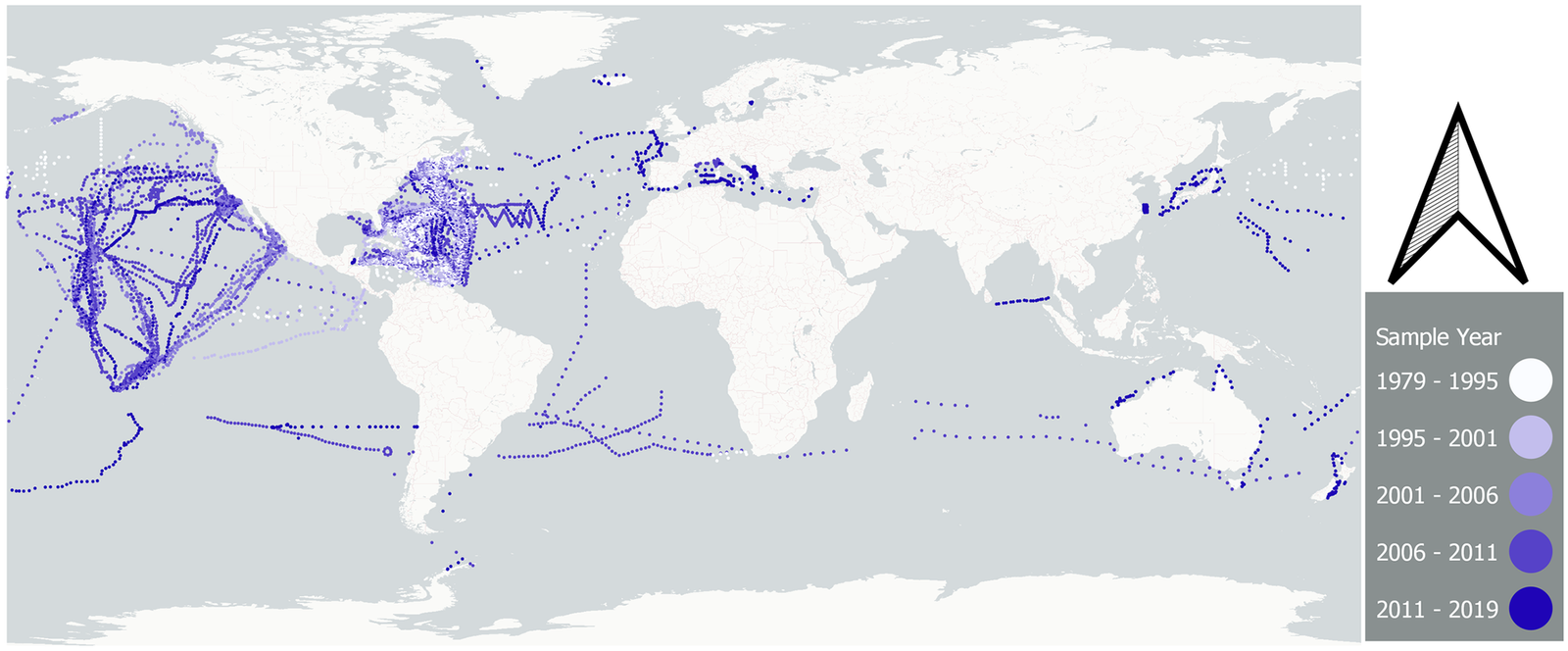The world’s oceans are facing a serious threat from a growing plastic pollution that has reached unprecedented levels.
According to a new study published in Plos One on March 8, 2023, more than 170 trillion plastic particles, weighing about 2.3 million tones, were floating on the surface of the oceans in 2019.
These plastic particles, mostly microplastics smaller than 5 mm, are formed by the fragmentation of larger plastic items or released from personal care products, clothing, and fishing gear.
The study, conducted by an international team of researchers from Australia, Canada, France and Germany, used satellite imagery and computer models to estimate the global distribution and abundance of floating plastic debris.
They found that plastic pollution was widespread across all ocean basins, with the highest concentrations in the North Pacific, Mediterranean Sea, and Indian Ocean.

A total of 11,777 stations were used to model a global time trend.
Source: Source: Plos One/the study
The study also revealed that plastic pollution has increased by more than tenfold since 19801, indicating a rapid accumulation of plastic waste in the marine environment.
Plastic pollution poses a serious threat to marine life and ecosystems.
Plastic particles can be ingested by fish, seabirds, turtles, and marine mammals, causing physical damage or chemical contamination.
Plastic particles can also transport invasive species or pathogens across ocean regions.
Moreover, plastic pollution can affect the ocean’s carbon cycle and climate by altering the light penetration and heat absorption of seawater.

The study’s authors call for urgent action to reduce plastic production and consumption and improve waste management practices.
They also suggest that more research is needed to understand the impacts of plastic pollution on marine life and ecosystems.









